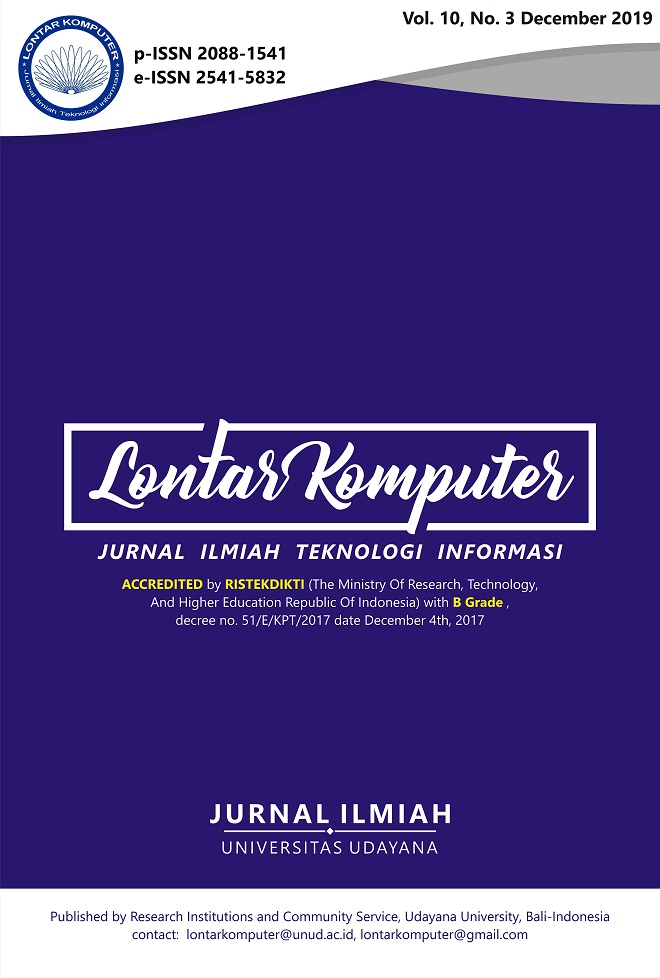Forensic Investigation Framework on Server Side of Private Cloud Computing
Abstract
Cloud Computing is one of the technologies that continue to develop and progress in rapid adoption rates due to the various benefits and conveniences offered. Cloud Computing has four types of adoption models, one of which is a Private model and is widely adopted by users because it is safer and customizable. The high level of cloud computing adoption is an opportunity for criminals to use cloud computing in committing their crimes and requires handling digital forensics. However, each cloud model has different characteristics, so the investigative method used is also different. Then there is no specific guidance for investigating cloud computing. So it is necessary to analyse the investigation of private cloud computing that used OwnCloud from the server-side and develop the novel investigation framework based on SNI 27037: 2014. An analysis of investigations is performed to develop the novel investigation framework and to find out what evidence can be found based on the novel framework. The results of the research conducted can be a reference for investigators to conduct forensic investigations in cloud computing on the server-side and the novel investigation framework will become a reference to be used as a guide to the investigation on private cloud computing in the server-side.
Downloads
References
[2] E. Erturk, “An incremental model for cloud adoption: Based on a study of regional organizations,” TEM Journal, vol. 6, no. 4, pp. 868–876, 2017.
[3] RightScale, “RightScale 2018 : State of the Cloud Report,” 2018.
[4] S. Goyal, “Public vs Private vs Hybrid vs Community - Cloud Computing: A Critical Review,” International Journal of Computer Network and Information Security, vol. 6, no. 3, pp. 20–29, 2014.
[5] L. Columbus, “Roundup Of Cloud Computing Forecasts And Market Estimates, 2018,” Forbes, 23-Sep-2018.
[6] D. Kolthof, “Crime in the Cloud : An Analysis of the Use of Cloud Services for Cybercrime,” in 23rd Twente Student Conference on IT, 2015.
[7] S. Hraiz, “Challenges of digital forensic investigation in cloud computing,” ICIT 2017 - 8th International Conference on Information Technology, Proceedings, pp. 568–571, 2017.
[8] S. Simou, C. Kalloniatis, S. Gritzalis, and H. Mouratidis, “A survey on cloud forensics challenges and solutions,” Security and Communication Networks, vol. 9, no. 18, pp. 6285–6314, 2016.
[9] S. Almulla, Y. Iraqi, and A. Jones, “A State-Of-The-Art Review Of Cloud,” Journal of Digital Forensics, Security and Law, vol. V9N4, pp. 7–28, 2014.
[10] R. B. Bahaweres, B. Santoso, and A. Ningsih, “Cloud Based Drive Forensic and DDoS Analysis on Seafile as Case Study,” in International Conference on Computing and Applied Informatics, 2017, vol. 755, no. 1.
[11] G. Zeng, “Research on Digital Forensics Based on Private Cloud Computing,” IPASJ International Journal of Information Technology, vol. 2, no. 9, pp. 24–29, 2014.
[12] M. M. Nasreldin, M. El-hennawy, H. K. Aslan, and A. El-hennawy, “Digital Forensics Evidence Acquisition and Chain of Custody in Cloud Computing,” IJCSI International Journal of Computer Science Issues, vol. 12, no. 1, pp. 153–160, 2015.
[13] G. Al Sadi, “Extracting Potential Forensic Evidences from Cloud Client Device using own Cloud as a Case Study,” International Journal of Computer Applications, vol. 132, no. 7, pp. 15–21, 2015.
[14] N. Widiyasono, I. Riadi, and A. Luthfi, “Investigation on the Services of Private Cloud Computing by Using ADAM Method,” International Journal of Electrical and Computing Engineering (IJECE), vol. 6, no. 5, pp. 2387–2395, 2016.
[15] D. Lillis, B. Becker, T. O’Sullivan, and M. Scanlon, “Current Challenges and Future Research Areas for Digital Forensic Investigation,” in CDFSL Proceedings, 2016, pp. 9–20.
[16] Y. D. Rahayu and Y. Prayudi, “Membangun Integrated Digital Forensics Investigation Frameworks ( IDFIF ) Menggunakan Metode Sequential Logic,” Seminar Nasional SENTIKA, vol. 2014, no. Sentika, 2014.
[17] D. Sudyana, Y. Prayudi, and B. Sugiantoro, “Analysis and Evaluation Digital Forensic Investigation Framework Using ISO 27037 : 2012,” International Journal of Cyber-Security and Digital Forensics (IJCSDF), vol. 8, no. 1, pp. 1–14, 2019.
[18] Badan Standarisasi Nasional, SNI 27037:2014 tentang Teknologi Informasi - Teknik Keamanan - Pedoman Identifikasi, pengumpulan, Akuisisi, dan Preservasi Bukti Digital. Jakarta, 2014.
[19] R. Montasari, “A standardised data acquisition process model for digital forensic investigations,” International Journal of Information and Computer Security, vol. 9, no. 3, pp. 229–249, 2017.
[20] D. Sudyana, B. Sugiantoro, and A. Luthfi, “Instrumen Evaluasi Framework Investigasi Forensika Digital Menggunakan SNI 27037:2014,” Jurnal Informatika Sunan Kalijaga, vol. 1, no. 2, pp. 75–83, 2016.
The Authors submitting a manuscript do so on the understanding that if accepted for publication, the copyright of the article shall be assigned to Jurnal Lontar Komputer as the publisher of the journal. Copyright encompasses exclusive rights to reproduce and deliver the article in all forms and media, as well as translations. The reproduction of any part of this journal (printed or online) will be allowed only with written permission from Jurnal Lontar Komputer. The Editorial Board of Jurnal Lontar Komputer makes every effort to ensure that no wrong or misleading data, opinions, or statements be published in the journal.
 This work is licensed under a Creative Commons Attribution 4.0 International License.
This work is licensed under a Creative Commons Attribution 4.0 International License.























